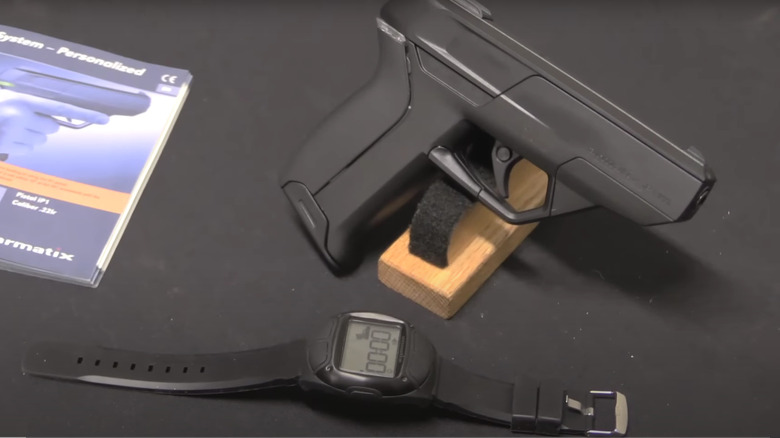The First Smart Gun May Not Be The Future Weapon We Expected
Firearm safety is a hot-button issue all over the world. Not only do civilians and sportsman want to ensure they are exercising the utmost care in the handling of firearms, militaries and law enforcement agencies want to do their best to make sure their weapons don't end up in the wrong hands.
"Smart guns" as a concept have been around for the past few decades. In theory, each firearm is constructed in such a way that only authorized users are capable of using the weapon. From the safety side of things, this sounds like a fantastic idea. In law enforcement, it could prevent a criminal from using a law enforcement officer's service weapon. Militaries and special forces soldiers could use smart guns to prevent their technology from getting into the hands of enemy forces. Civilian gun owners in countries or states where it's legally permissible could use smart gun technology to hinder thieves from operating a stolen gun, but also prevent children from using a gun they may find in the house.
In practice, smart gun technology is still far away. The iP1 was conceived by a German gunmaker called Armatix in an effort to produce the first real smart gun. The company's effort, as valiant as it was, missed the mark completely and never reached a commercial market.
Smart in concept only
Developed in early to mid-2000s, The Armatix iP1 uses a special watch to determine whether or not the person holding the weapon is in fact the correct user. It's straight out of James Bond. If the user does not have the watch or isn't authorized, the gun won't function. The watch and gun are both embedded with RFID technology that allows them to communicate with each other, according to Forgotten Weapons.
On a technology side, the iP1 fails because it's not easy to use. Even firearms experts and historians claim the pairing process between the watch and the gun can take upwards of an hour due to the finnicky controls on the watch and the less than intuitive gun as it features no screen of any kind (via Forgotten Weapons). As an actual firearm, the iP1 couldn't be adopted for serious use. For starters, it's chambered in a .22 long rifle, a caliber typically suited for target shooting or small game hunting, making it ill-suited for personal defense or law enforcement roles. Secondly, the trigger mechanism was incredibly heavy to use and the sights on the top of the gun were ill-suited for accurate shooting.
If a lackluster user experience wasn't enough, gun organizations vehemently lobbied against any kind of large-scale smart gun adoption, reports Wired. Overall, the iP1 was more of a proof of concept than a serious firearm aimed at a commercial, military or law-enforcement market.
